We’ve all experienced that frustration when your chainsaw just won’t cut, even though you’re trying your best.
It can be really annoying!
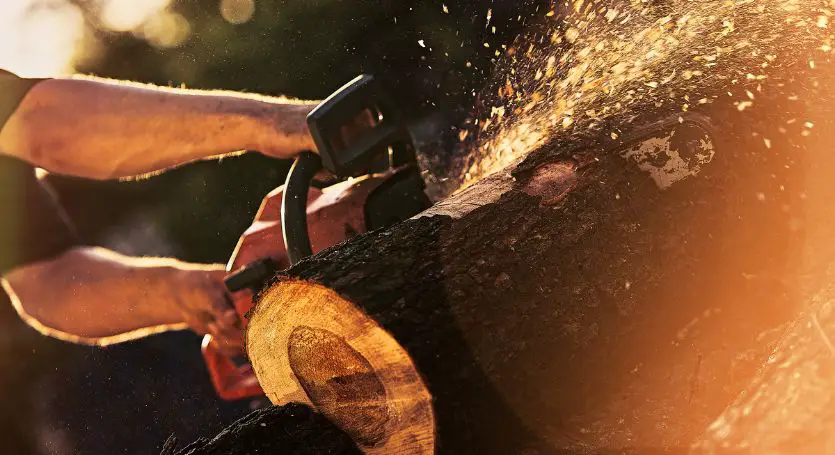
But the question is, why won’t a chainsaw cut?
If your chainsaw won’t cut, it’s most likely due to a dull or excessively worn chain. However, improper chain tension, incorrect chain mounting, a damaged guide bar, a worn-out clutch, or sprocket can also be the culprits.
In this article, I’ll go through all the possible causes and how you can get your chainsaw up & running again in detail.
Keep reading!
Table of Contents
ToggleYou are Using a Dull or Worn Out Chain
Chainsaw spinning but not cutting?
The problem is most likely a dull or worn out chain.
Let me explain:
Chainsaw chains can become dull with use over time. And if your chain has seen a lot of action, it may be worn out or not sharp enough to cut effectively.
In addition to that, poor sharpening techniques, incorrect chain tension, insufficient lubrication, and a worn chain sprocket can contribute to chain damage. (Here are 5 more reasons that can dull your chain in no time!)
Signs of a Dull Chainsaw Chain
Here are 4 signs that your chain is dull:
- Your saw produces powdery sawdust instead of wood chips.
- Your saw cuts “crooked”.
- Your saw doesn’t pull itself into the wood. Instead, you have to apply extra force to make it cut.
- Your saw produces excessive smoke.
- You notice visual signs like blunted cutters & burred tooth edges.
If you notice any of these signs, sharpening the chain might solve the issue and get your saw back on track!
However, if your chain is severely damaged or you’ve already grounded the teeth to their limit, you may need to replace the chain altogether.
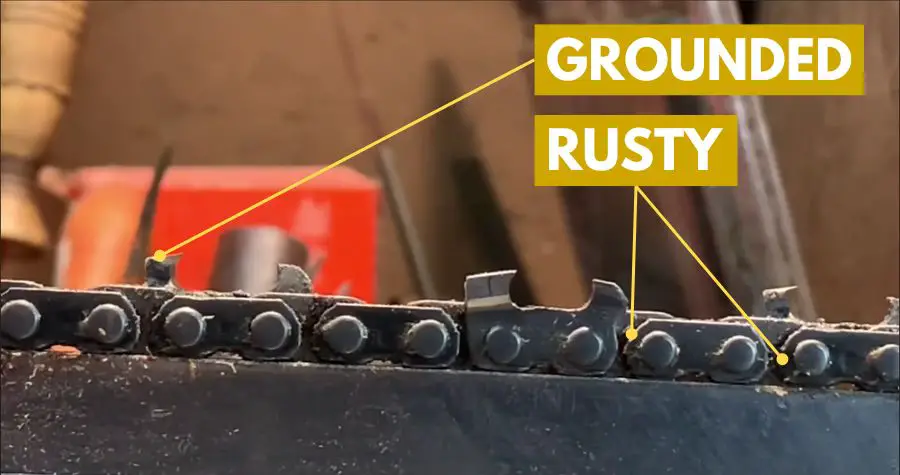
You Sharpened the Chain Wrong
Do you know what I’m tired of hearing?
“Bro, I’ve sharpened the chain, but it’s still not cutting. What now?”
My reply: “Sorry brother, but you’re probably doing it wrong!“
I understand your frustration, but sharpening a chainsaw chain is a SKILL! It’s not just about sharpening the chain; it’s about doing it correctly.
If the sharpening angle, depth, or technique is off, the chain won’t perform well. It might still appear sharp but not won’t do its job!
How to Tell if Your Chain is Sharp?
A properly sharpened chain cutter should have a sharp, consistent edge with the same depth and angle on all teeth. (here’s an example: )
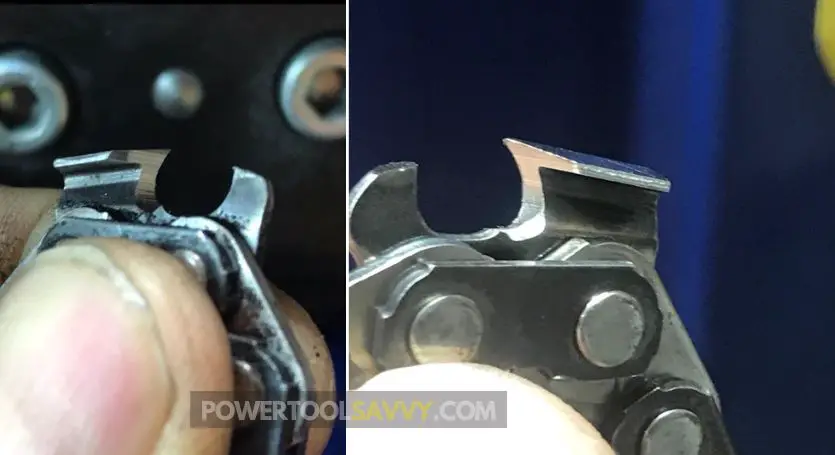
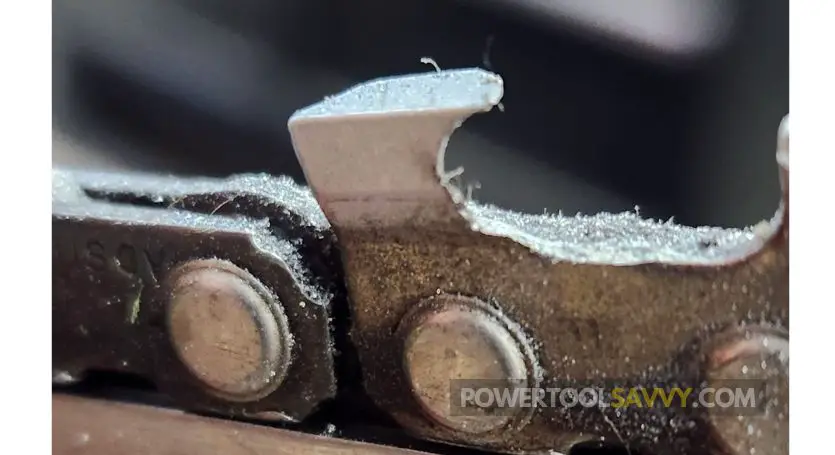
Gently drag your fingernail across the top of a tooth on the chain. If it’s sharp, it should scrape a small amount of your nail off (you’ll see a tiny bit of nail residue on the tooth).
⚠️ CAUTION: Be cautious & don’t apply too much pressure. If it doesn’t scrape off a bit of your nail, your chain probably needs a good sharpening job.
You Installed the Chain Backward
If your chain is sharpened correctly but still not cutting, you may have accidentally installed it backward.
Chainsaw chains are designed to cut in one specific direction. If it’s on backward, it won’t cut (no matter how sharp it is).
So, what’s the correct direction?
What's the Correct Chainsaw Chain Direction?
A chainsaw chain always moves in a counter-clockwise direction (when viewed from the left side of the saw). In other words, it moves toward the tip of the saw & away from the handle.
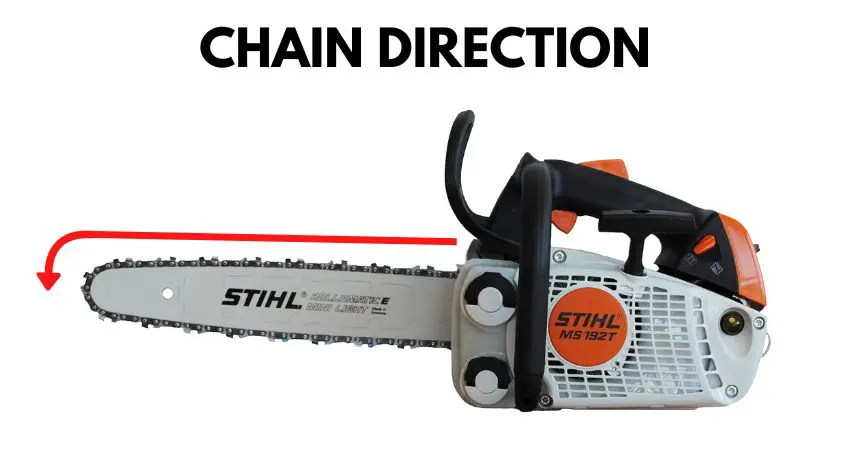
Here’s how a correctly-mounted chain should look from the right side: 👇
- The drive link points forward (pull the chain out slightly from the bar and check).
- The cutter faces toward the tip of the saw.
- The raker is in front of the cutter and points backward.
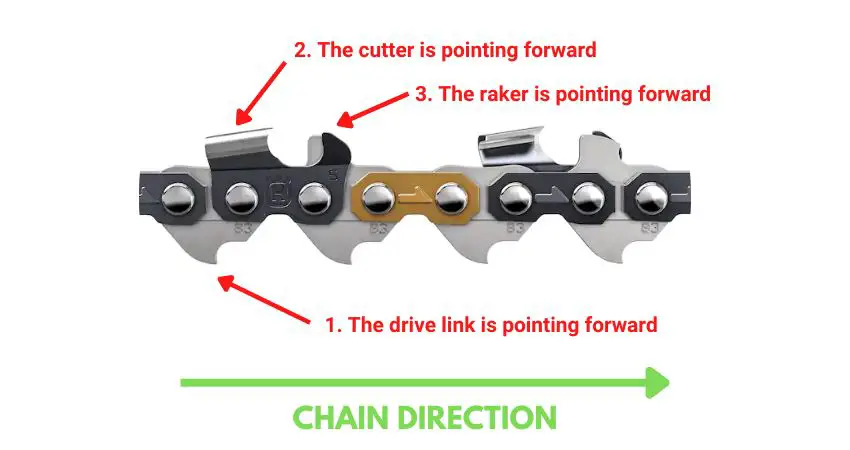
If these signs aren’t in place, it means you’ve mounted the chain incorrectly, and that’s why your chainsaw isn’t cutting.
Putting Chain on a Chainsaw the Right Way
- Loosen the bar nuts using a wrench & take off the cover.
- Remove the bar & chain from the chainsaw.
- Mount the chain onto the guide bar correctly, ensuring the cutters are pointing toward the tip of your bar.
- Put the guide bar back into the chainsaw.
- Put the cover back in place & tighten the bar nuts.
- Finally, tighten the chain to the correct tension.
Your Chain Isn't Tensioned Correctly
Another overlooked (but equally important) factor that might be affecting the cutting performance of your chainsaw is improper chain tension.
Here’s what you need to know:
If your chain is too loose, it may not be able to make good contact with the wood and may have a tendency to come off the bar.
And if the chain is too tight, it won’t move freely and will put a lot of strain on the bar, sprocket and motor (as well as reduce your saw’s cutting performance).
So how tight should your chainsaw chain be?
Well, a good rule of thumb is to tighten it until you can just barely pull the drive links off the bar grooves. But not too tight that you can’t pull the chain around the bar.
(Read this article where I’ve explained how tight a chainsaw chain should be in detail)
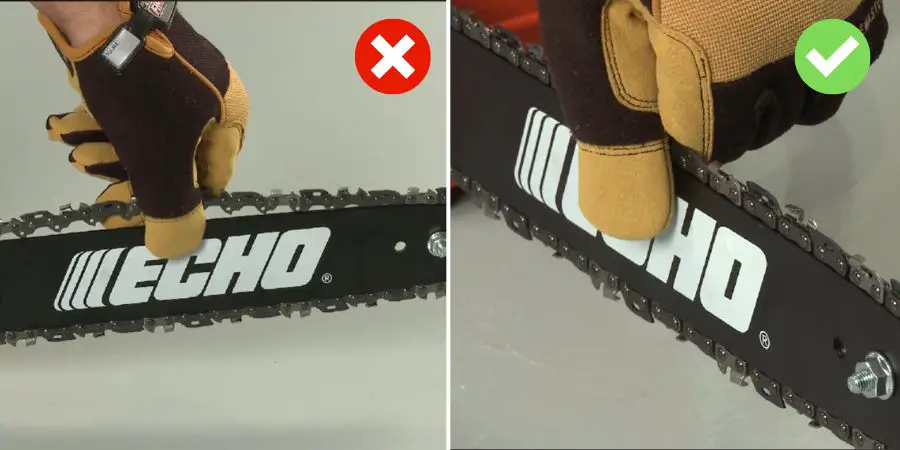
BONUS TIPS
- Loosen the bar nuts (before tightening the chain) enough that you can move the bar up & down slightly.
- Hold the bar nose up while tightening the chain. This will help distribute the tension evenly throughout the chain & eliminate clearance.
- Make sure the chain is cold when you adjust the tension. Hot chain can expand and when it cools down, it might become overly tight (possibly causing damage to your bar).
- Tighten your chainsaw chain if it seems loose. (You can read this article where I’ve answered how often one should tighten his chainsaw chain in detail)
Your Guide Bar is Damaged or Worn Out
Often people come to me, ask me to sharpen their chain, and I do so (they pay me of course!). But even after sharpening, many of them come back & say that their chainsaw isn’t cutting.
After examining the chainsaw, guess what I usually find out?
Yup, their guide bar is so severely damaged that it makes the chain go off track and, thus, not cut properly.
Signs that Your Guide Bar is Damaged
Here are 5 signs that your guide bar is worn out:
- The edges of the bar have sharp bumps that you can feel with your fingers.
- The groove in the bar has become wider, and the chain wiggles too much.
- The bar looks bent or crooked when you place it on a flat surface.
- The bar nose sprocket is jammed or doesn’t rotate freely.
- There are pieces missing from the bar (like in this picture).
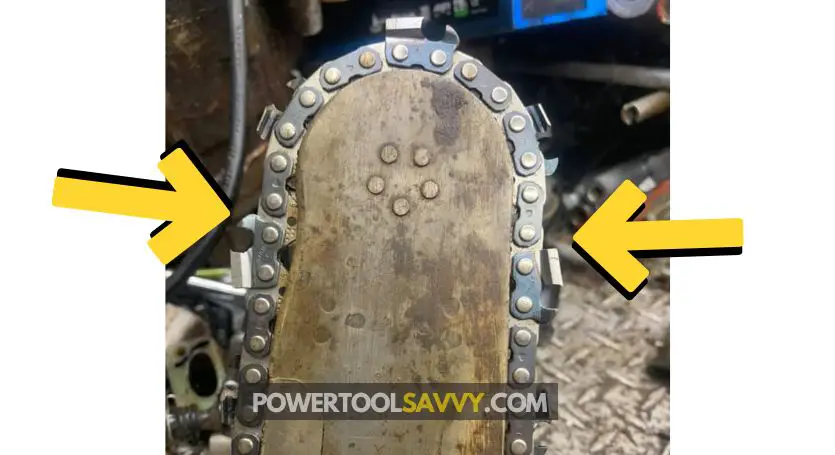
If you notice any of these signs when checking your guide bar, it doesn’t mean it’s entirely unusable.
If you think it can be FIXED, go ahead and repair it; then continue using it.
But for those who aren’t very technical, it’s a GOOD idea to replace the guide bar if any of these signs are there.
Believe me, it’ll save you money in the long term!
The Clutch is Not Functioning Properly
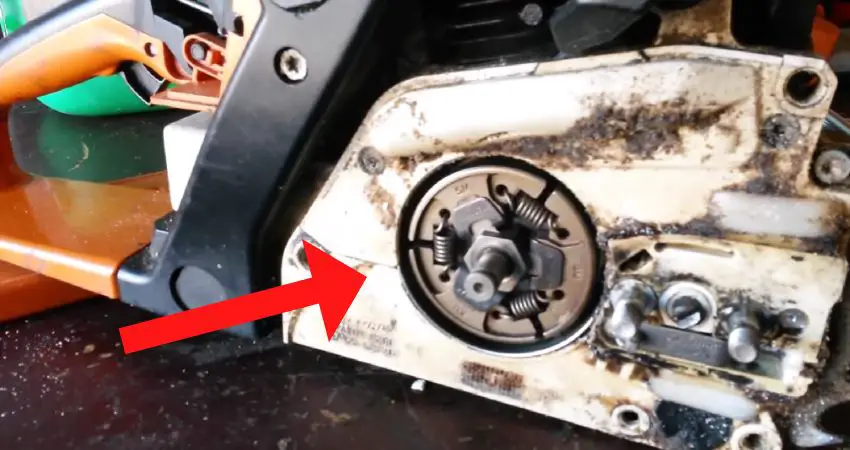
Your chainsaw won’t cut if the clutch is worn out or not working properly.
Let me explain
How Does the Clutch Work?
Well, gas-powered chainsaws have a part called the “centrifugal clutch” that’s crucial for chain operation. It relies on centrifugal force.
Here’s how it works: 👇
A drive shaft, connected to the engine’s crankshaft, sits at the center of the clutch.
When the engine runs at high speed, the drive shaft also spins fast, generating centrifugal force.
This force pushes small arms (clutch shoes) outward, making them touch the inner wall of the clutch drum.
The clutch drum is connected to the chain sprocket, so it starts spinning.
This causes the chain to rotate around the guide bar and cut things.
When you reduce the engine’s speed (like when you release the throttle), the drive shaft slows down, and the clutch shoes move back to their original position, disconnecting the engine from the chain.
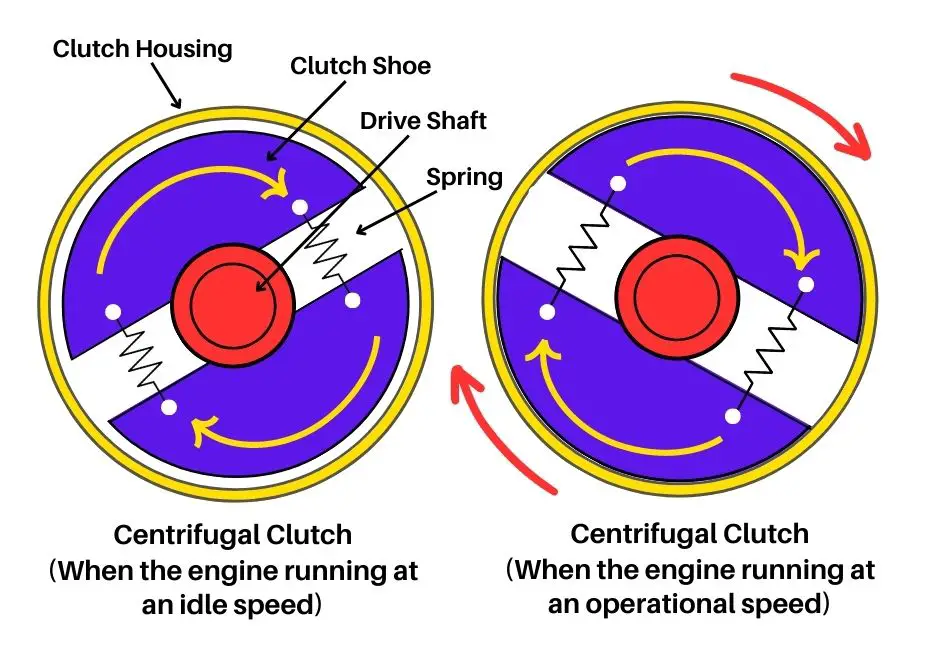
Checkout this video for a better view:
So, if your chainsaw isn’t cutting, there might be something WRONG with the clutch.
How to Tell if the Clutch is Damaged?
Look for these 3 signs:
- The chain keeps slipping (or lagging) when the throttle is fully engaged.
- The chainsaw vibrates abnormally & makes a squealing noise while running.
- The chain continues to spin even when the throttle has been released.
If you’ve observed any of these 3 signs, I would recommend taking your saw to a professional & having it inspected!
“What if the problem is not the clutch?“
Don’t worry! There’s still one MORE thing to check.
Your Chain Sprocket is Worn Out
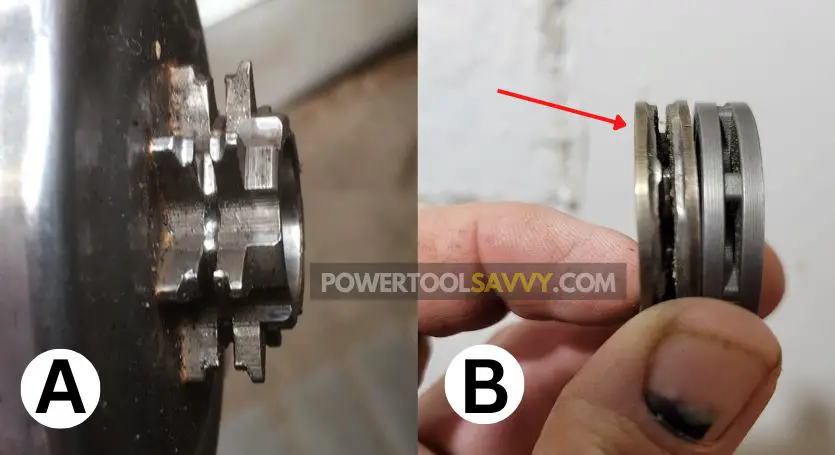
If your clutch is completely OKAY, you should inspect the chain sprocket.
Here’s what you need to know:
Over time, the sprocket on your chainsaw chain can develop deep wear marks. This can significantly impact the performance of your chainsaw (and if the sprocket is badly worn out, it can cause your chainsaw to cut poorly or not cut at all).
In addition, a worn out sprocket could –
- cause damage to the chain & bar,
- make it harder to tighten the chain, and
- prevent you from making a straight cut.
Types of Chainsaw Chain Sprockets
There are two types of chain sprockets:
- Spur sprocket: Looks like a star. It’s the most common type.
- Rim Sprocket: A round-shaped, closed, multi-channel sprocket.
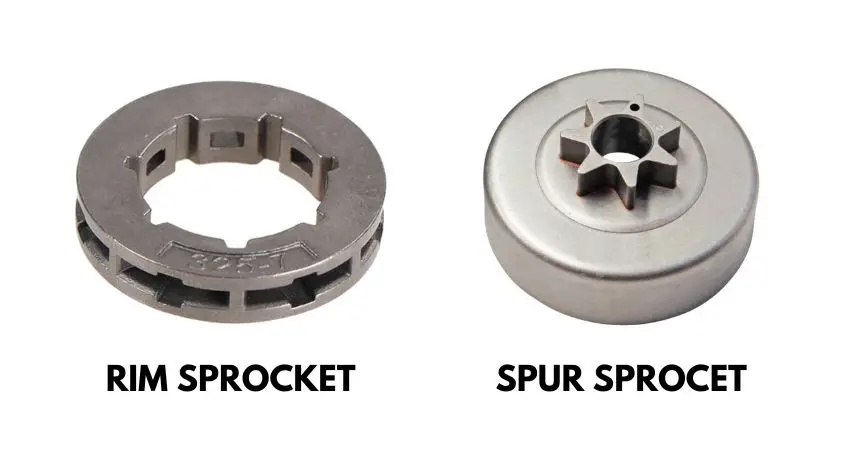
How to Tell if Your Chain Sprocket is Worn Out?
Tbh, a little wear & tear on the sprocket is okay, but if you see deep grooves or it looks cracked, especially on a spur sprocket, it’s time to get a new one.
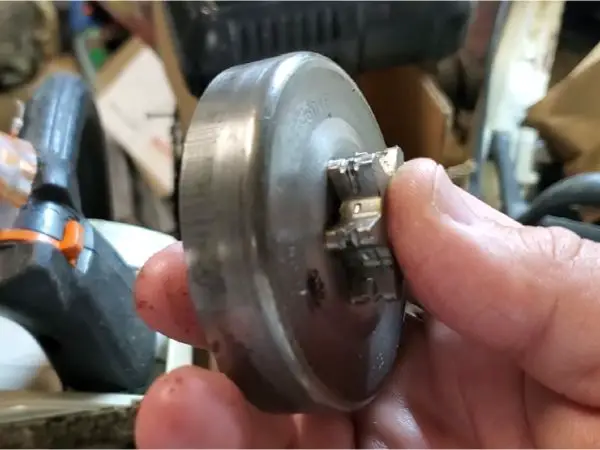
If you have a rim sprocket, it’s simpler to know when it needs replacing.
Rim sprockets come with wear indicators on each side of the channels. When the wear surpasses the limit, it’s time for a replacement.
It’s easy to check! (See the image below for reference)
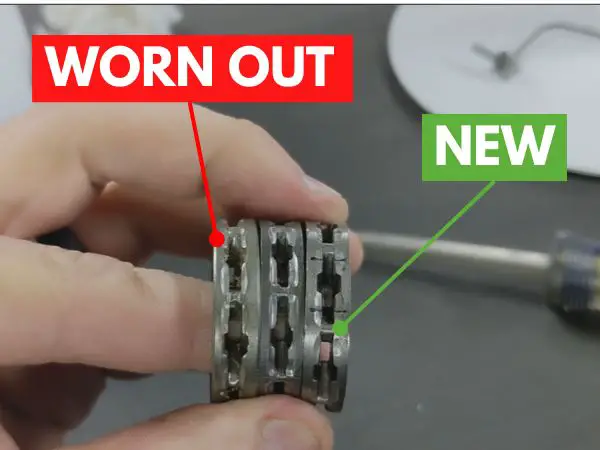
That’s all for this article!
Btw, if your chainsaw chain won’t tighten, read this article.

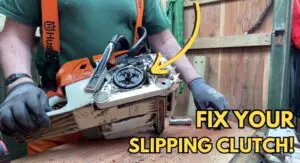
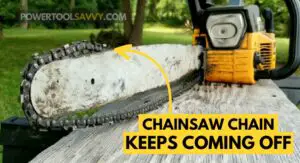
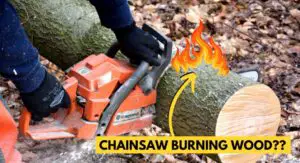


Pingback: Correct Chainsaw Chain Direction (with REAL Pictures!)
Pingback: Are Chainsaw Chains Universal? (Spoiler: NO, Here's Why)
Pingback: How to Tell If a Chainsaw Chain is Dull (or Worn Out)?